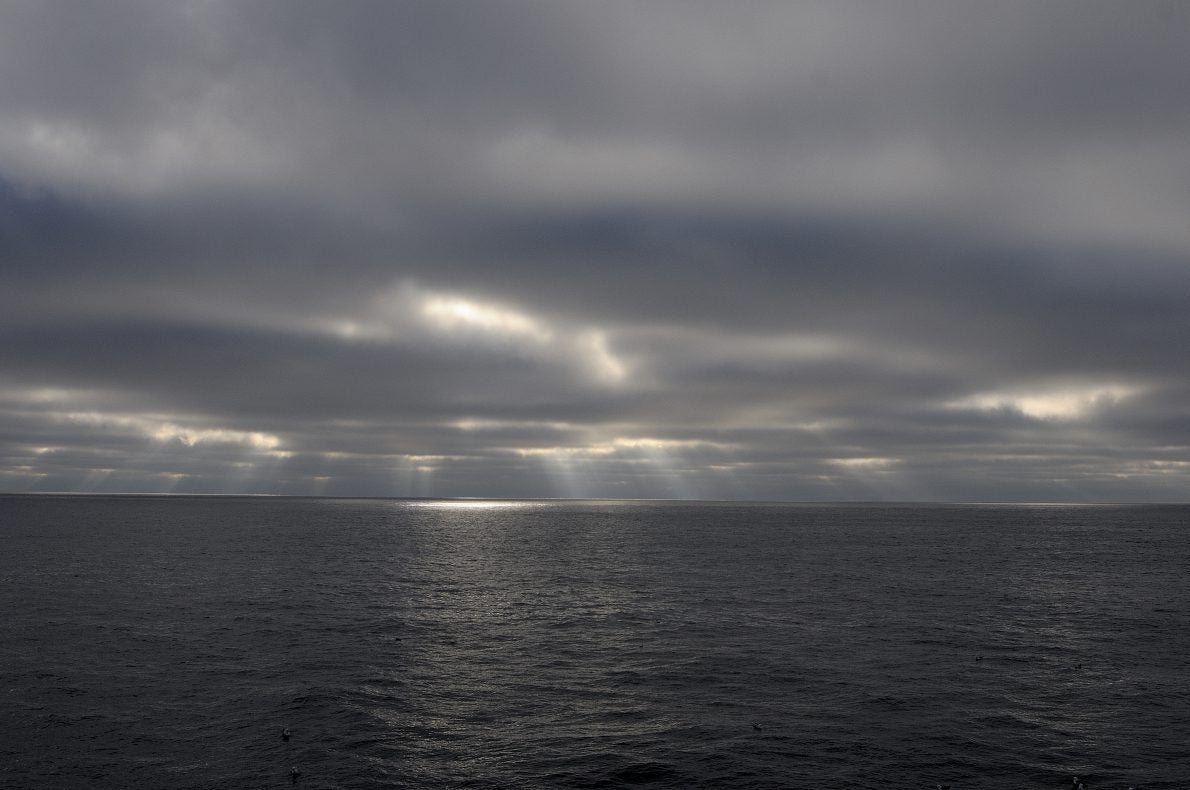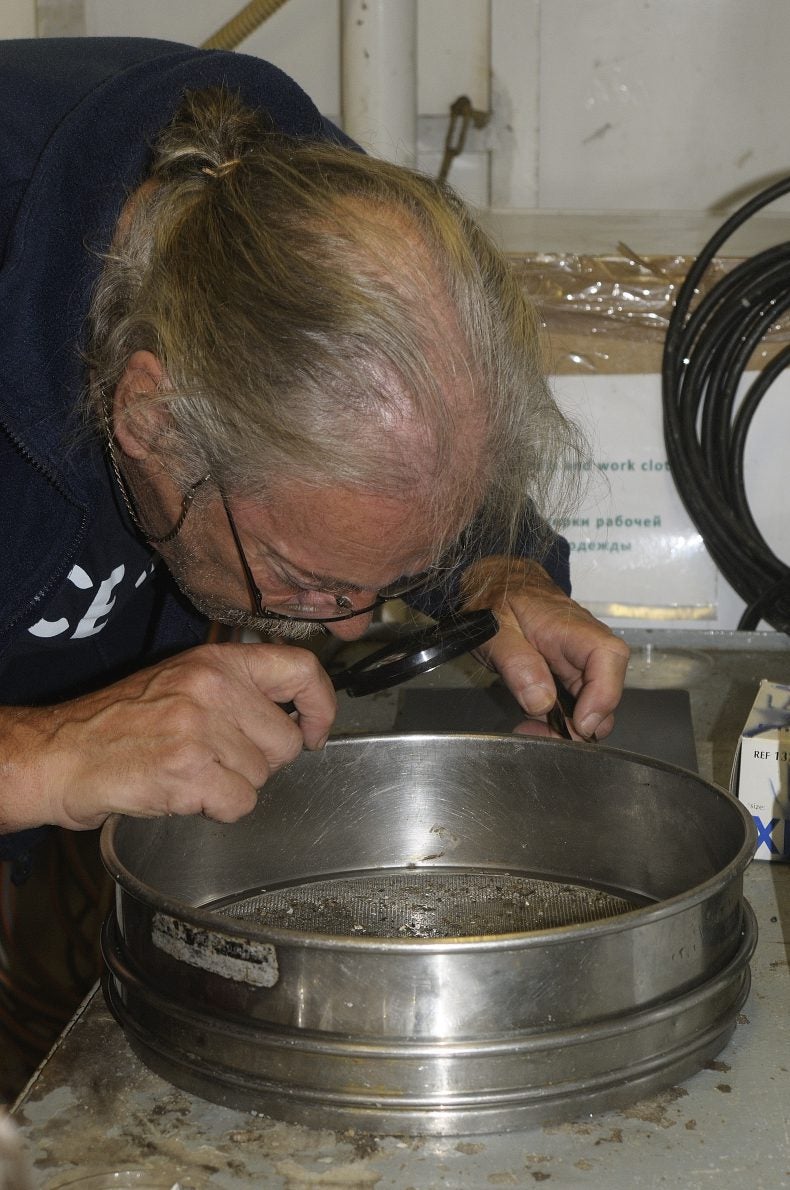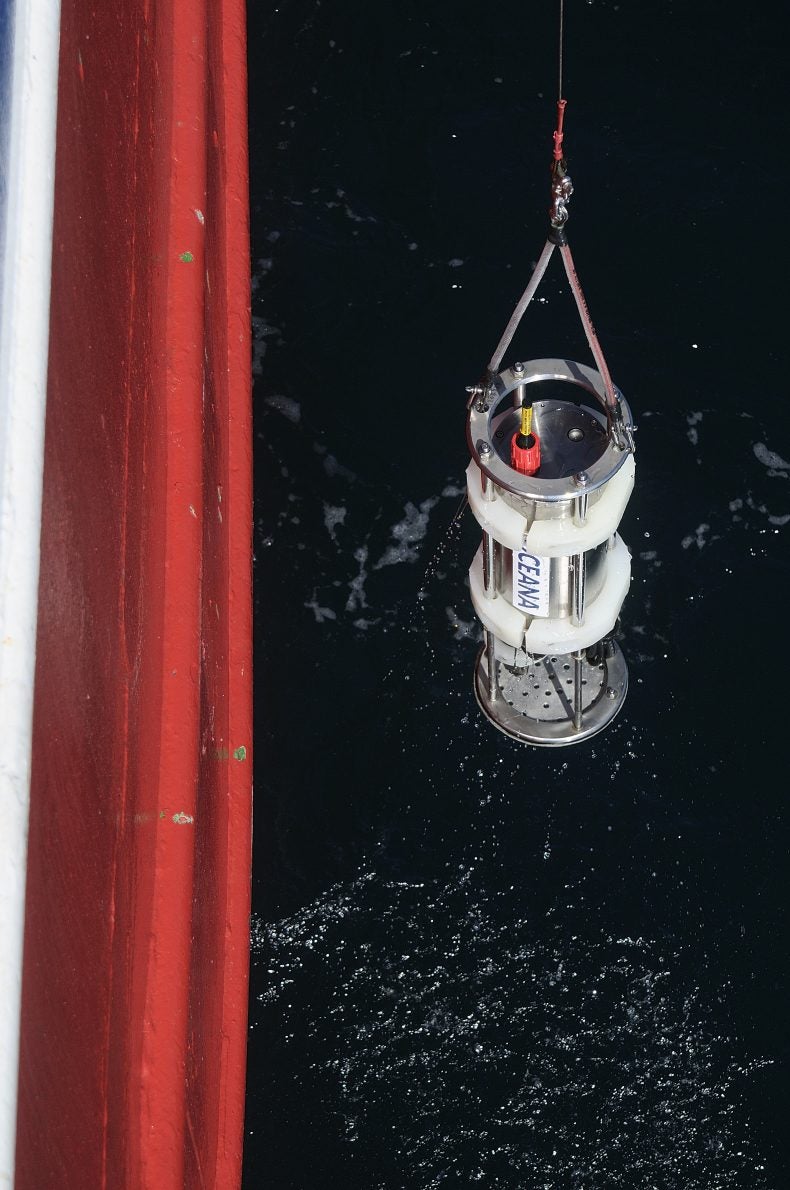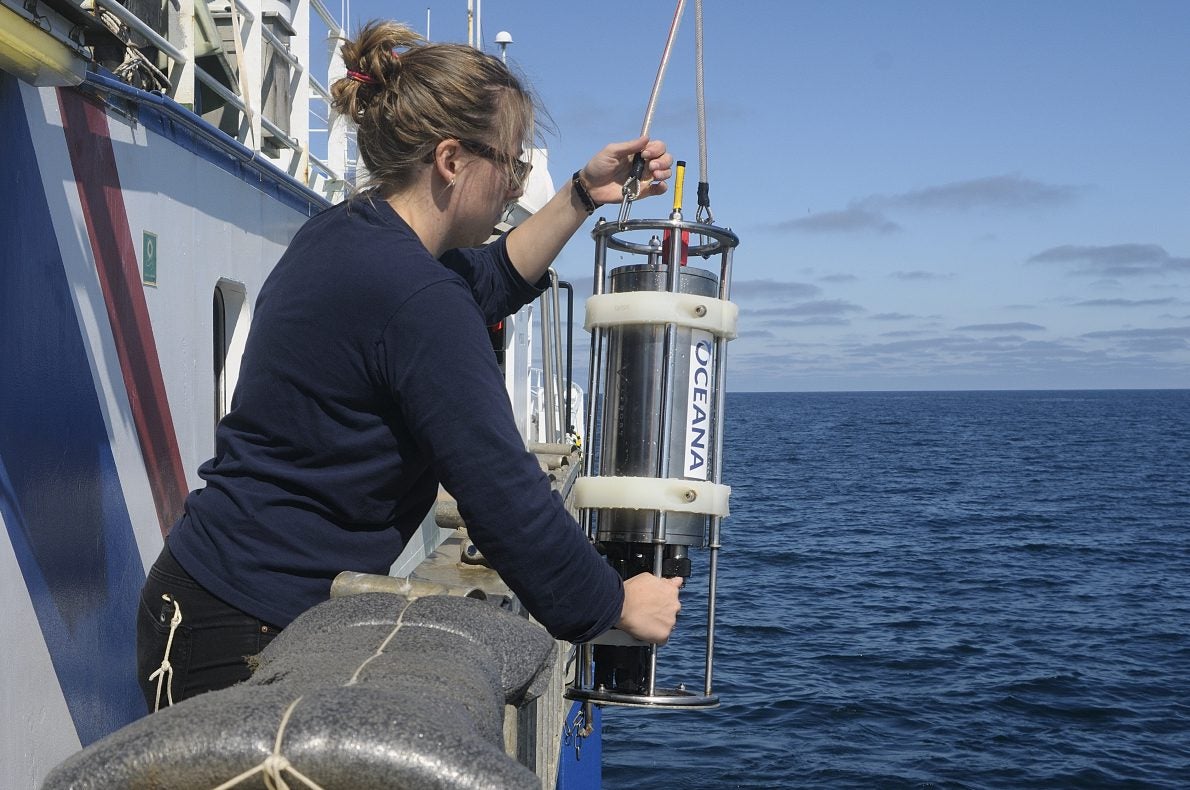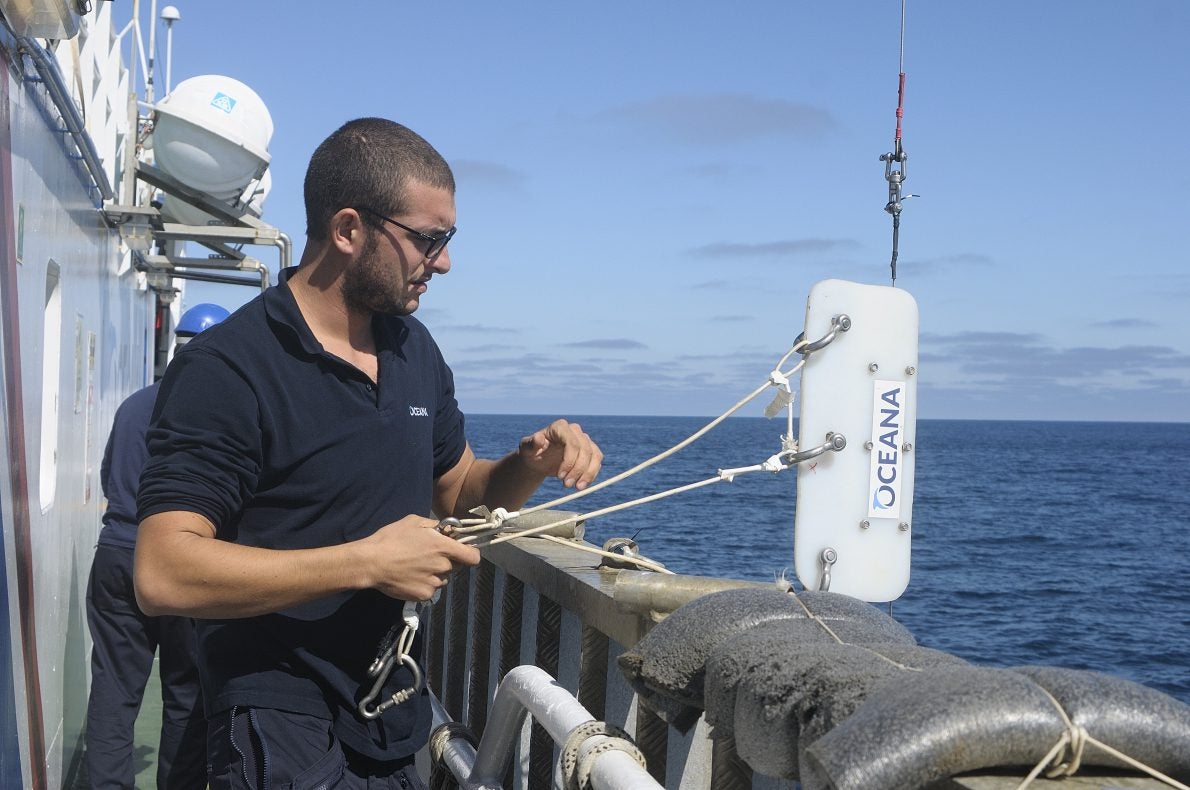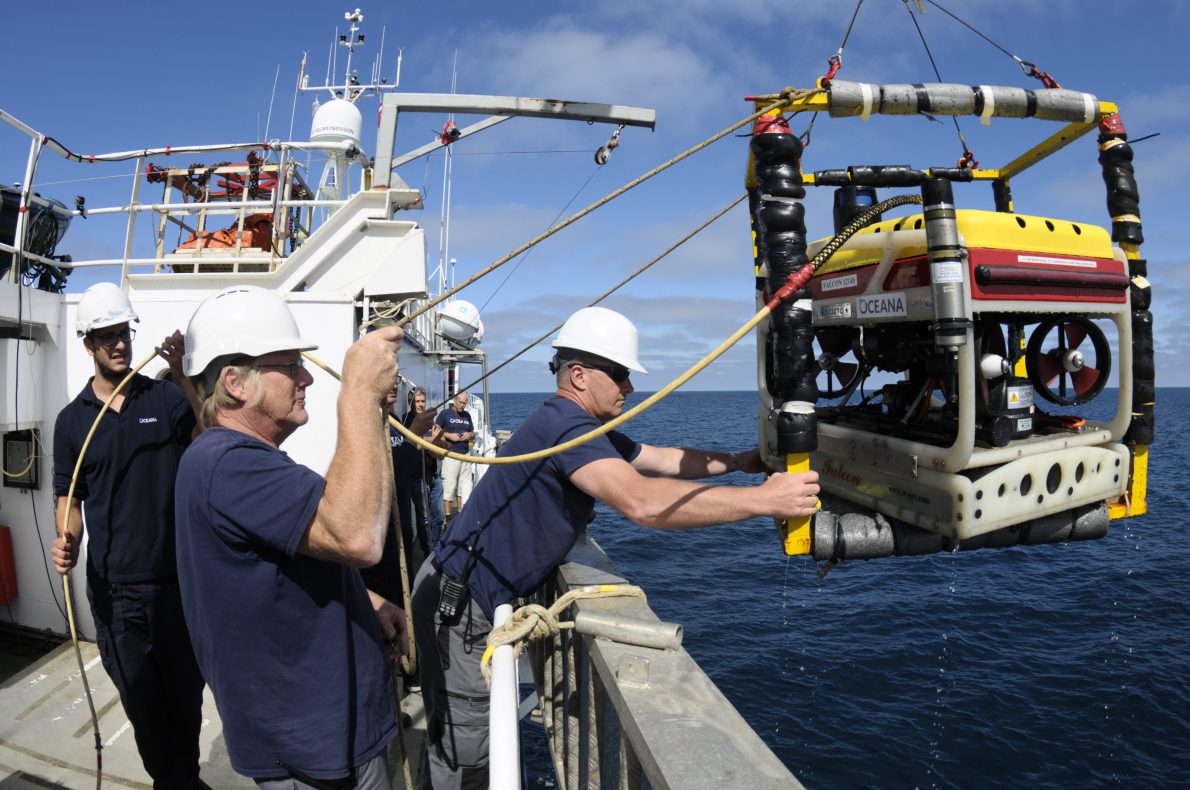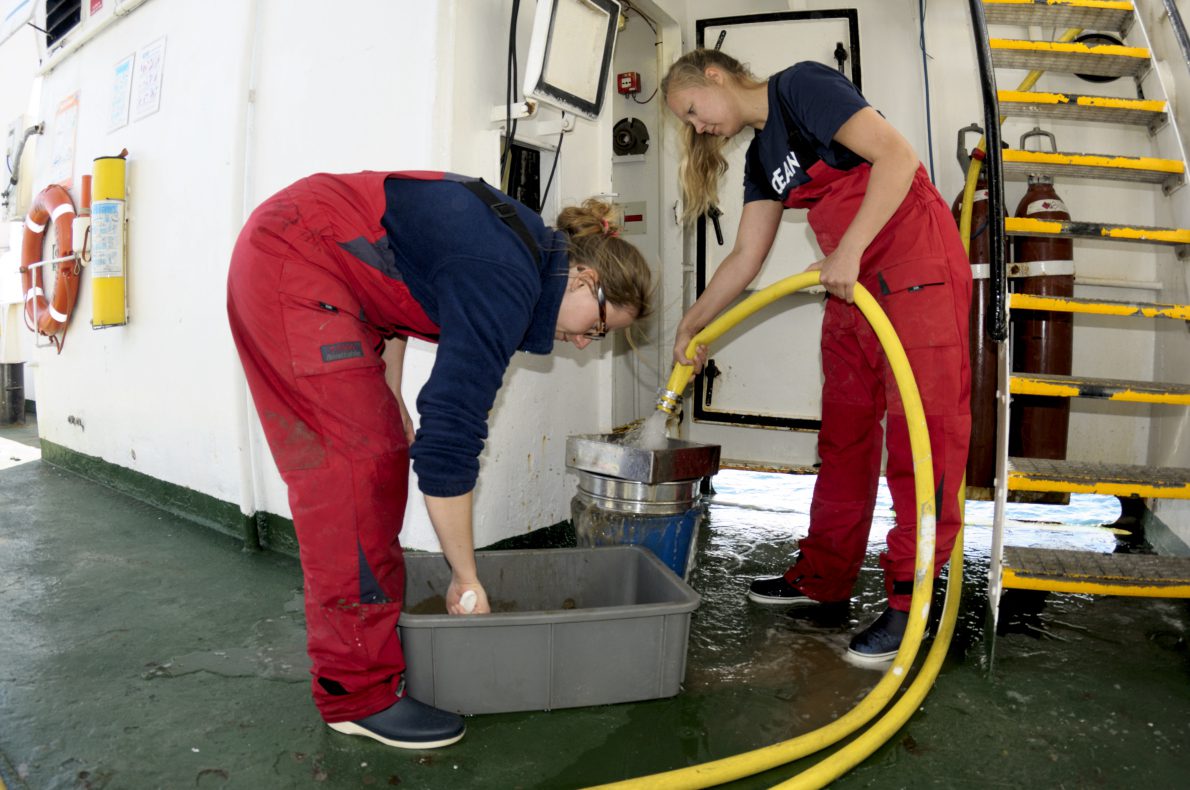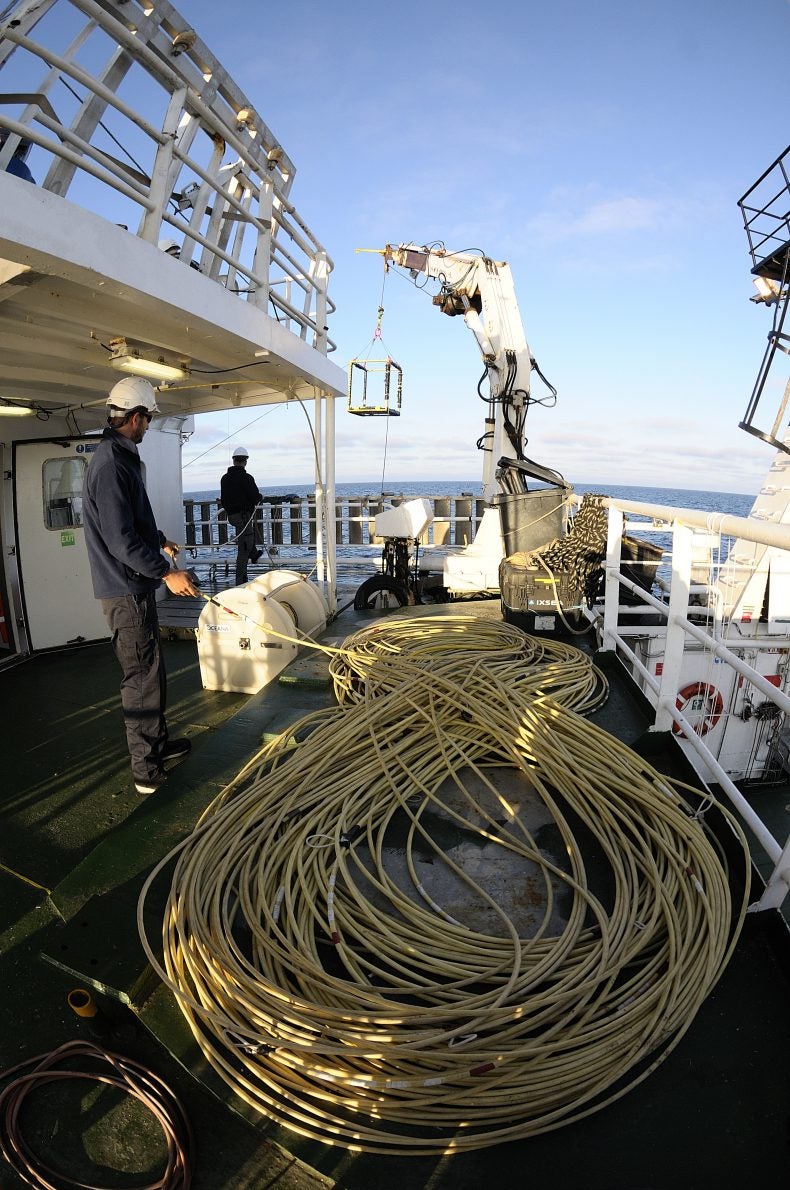August 17, 2016
“Mud Man” on board
Yesterday I arrived in Denmark with my colleague Floris Bennema by train from The Netherlands – a long and arduous train journey with several transfers. Finally, we boarded the last scheduled train to the remote fishing town of Thyboron, half-way up the sparsely populated peninsula of Jutland, (Jylland), Denmark. It was as if it was waiting just for us, with very few other passengers aboard as it departed in the late sun.
As we approached our destination we made sure not to forget to push the STOP button or we could have missed our ‘station’, marked by a simple sign and a small side-walk, serving as a platform.
We were warmly welcomed by a cheering team from Oceana: Finnish Hanna and Danish Cecilie and Claus, a Dane but also Dutch-speaking. The chaperon? Finally, we saw the ship which seemed bigger and more impressive than in the pictures from the web. Tired and overwhelmed but encouraged by the new names and faces and different nationalities, it promised to be an adventurous community on this compact Icelandic vessel with a mixed crew of researchers and good facilities to investigate the oceans thanks to Oceana. The ship promptly departed as we hit deck, an hour late.
Floris and I are both Dutch nationals invited via Stichting Anemoon in NL, investigating the status of marine nature and environments in The Netherlands and the Dutch part of the North-Sea. Floris is especially interested in sponges, whereas I specialise in molluscs. Fishes, arthropods etc. are registered, the texture of the bottom is observed, and worms are studied by Cecilie and Hanna – a very muddy business! Luckily, I like getting my hands dirty and happily join them. Conversation on board is usually in English, but at least 8 languages and dialects are heard every day – a lively Babylonian experience indeed!
The 21 people on board must cope with the confined and apparently confusing complexity of the ship’s layout. At first it takes time to even find your way back to your own sleeping quarter, circling all decks from stern to bow quietly, because there are always people sleeping due to shifts having to cover 24 hours. It is quite remarkable to witness the rather comfortable way of sleeping, eating and personal care which occurs despite the confines by watching all the different tasks every crew member carries out. It is a study of social behaviour that even after one day shows the ability of people to work so closely together without threading on each other’s toes too much.
My task is to help find and identify molluscs in bottom-samples, register their location, date and depth, and help discover animals and vegetation on the moon-like landscape of the murky North Sea floor. Today: 1020 mBar, 16.5ºC, weather fair, sunny and the often tempestuous sea, now calm and peaceful. It’s kindly welcomed and the conditions seized through many bottom-views via the remote-controlled submarine-camera and the deployment of a Van-Veen grab bringing up samples from whatever bottom-depth you want. The region is relatively shallow: max. 30-70 meters in the eastern, central and southern parts, in which we will investigate. There is a lot of mud to explore and I am the “Mud Man” on board.

